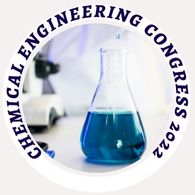Organometallics and Synthesis
Organometallic science is the investigation of organometallic compounds, synthetic mixtures containing at any rate one substance connection between a carbon particle of a natural atom and a metal, including antacid, basic earth, and progress metals, and now and again expanded to incorporate metalloids like boron, silicon, and tin, as well. Aside from securities to organyl sections or particles, securities to 'inorganic' carbon, similar to carbon monoxide (metal carbonyls), cyanide, or carbide, are by and large viewed as organometallic also. Some connected mixtures, for example, progress metal hydrides and metal phosphine edifices are regularly remembered for conversations of organometallic compounds, however carefully talking, they are not really organometallic. The related however unmistakable term "metalorganic compound" alludes to metal-containing intensifies lacking direct metal-carbon bonds yet which contain natural ligands. Metal β-diketonates, alkoxides, dialkylamides, and metal phosphine buildings are agent individuals from this class. The field of organometallic science consolidates parts of conventional inorganic and natural science.
Organometallic compounds are generally utilized both stoichiometrically in research and mechanical synthetic responses, just as in the part of impetuses to build the paces of such responses (e.g., as in employments of homogeneous catalysis), where target particles incorporate polymers, drugs, and numerous different kinds of pragmatic items.
Organometallic compounds go through a few significant responses:
- transmetalation
- transitory inclusion
- β-hydride disposal
- electron move
- carbon-hydrogen bond enactment
- carbometalation
- hydrometalation
- cyclometalation
Related Conference of Organometallics and Synthesis
Organometallics and Synthesis Conference Speakers
Recommended Sessions
- Biochemical Engineering
- Biomaterials and Biopolymers
- Catalysis and Reaction Engineering
- Catalysis and Zeolites
- Catalysis for Biorefineries
- Catalysis for Chemical Synthesis
- Catalysis for Energy
- Catalysis in Nanotechnology
- Catalytic Materials & Mechanisms
- Catalytic Pyrolysis
- Chemical Engineering in Nanotechnology
- Chemical Kinetics
- Drug discovery and synthesis
- Electrocatalysis
- Environmental Catalysis
- Enzymes, Biocatalysis and Biotransformation
- Fluid dynamics & its Phenomena
- Green and Sustainable Chemistry
- Heterogeneous Catalysis and Homogeneous Catalysis
- Industrial Chemistry
- Molecular Catalysis
- Organocatalysis
- Organometallics and Synthesis
- Petrochemical Engineering
- Photocatalysis
- Plasma Catalysis
- Polymer Chemistry
- Surface Chemistry
Related Journals
Are you interested in
- 3D Printing in Microfluidics - Microfluidics 2026 (Germany)
- AI & Automation in Microfluidic Systems - Microfluidics 2026 (Germany)
- Biomedical Microfluidic Applications - Microfluidics 2026 (Germany)
- Clinical Translation & Commercialization - Microfluidics 2026 (Germany)
- Droplet-Based Microfluidics - Microfluidics 2026 (Germany)
- Lab-on-a-Chip Innovations - Microfluidics 2026 (Germany)
- Microfabrication & Soft Lithography - Microfluidics 2026 (Germany)
- Microfluidic Biosensors & Diagnostics - Microfluidics 2026 (Germany)
- Microfluidic Cell Culture Platforms - Microfluidics 2026 (Germany)
- Microfluidics for Drug Delivery - Microfluidics 2026 (Germany)
- Microreactors & Chemical Processing - Microfluidics 2026 (Germany)
- Nanofluidics & Molecular Transport - Microfluidics 2026 (Germany)
- Organ-on-Chip Engineering - Microfluidics 2026 (Germany)
- Point-of-Care Microdevices - Microfluidics 2026 (Germany)
- Single-Cell Microfluidic Analysis - Microfluidics 2026 (Germany)

